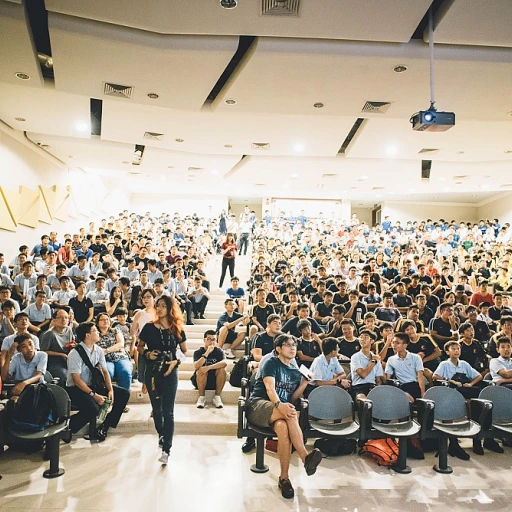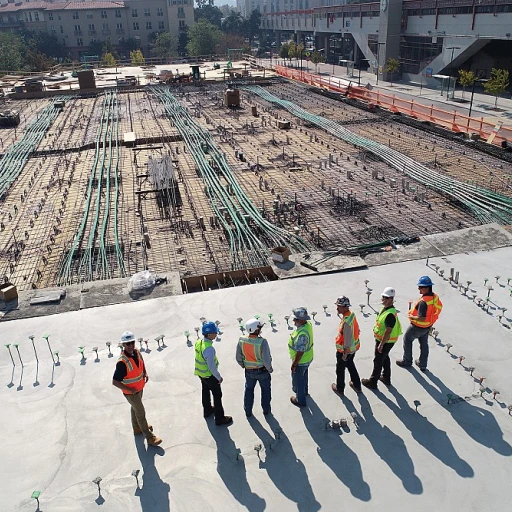
Defining rapid and raci frameworks
Understanding the Core of Rapid and RACI
In the fast-paced world of entrepreneurship, decision making is a constant challenge. Two frameworks often used to clarify roles and streamline the process are Rapid and RACI. Both help teams define who is responsible, who gives input, and who makes the final decision, but they do so in different ways. Knowing the difference is key for any general manager aiming to improve project management and team performance.
What is the Rapid Framework?
The Rapid framework is a decision making model that assigns specific roles to team members involved in a particular decision. The acronym stands for Recommend, Agree, Perform, Input, and Decide. Each role is clearly defined:
- Recommend: The person or group who proposes a solution or course of action.
- Agree: Stakeholders whose approval is required before a decision can move forward.
- Perform: Those responsible for executing the agreed-upon tasks.
- Input: Team members who provide essential information or expertise.
- Decide: The individual with the authority to make the final decision.
This framework is especially useful when rapid decision making is needed, and when clarity around roles and responsibilities can prevent delays. It helps cross functional teams move quickly by ensuring everyone knows their part in the process.
What is the RACI Matrix?
The RACI matrix is a classic tool in project management. RACI stands for Responsible, Accountable, Consulted, and Informed. It maps out roles and responsibilities for each task or decision within a project:
- Responsible: The team member who does the work to complete the task.
- Accountable: The person ultimately answerable for the correct and thorough completion of the task.
- Consulted: Stakeholders who provide input and feedback.
- Informed: Those who need to be kept updated on progress or decisions.
RACI is often visualized as a chart or matrix, making it easy to see at a glance who is doing what. This is particularly helpful in complex projects with many stakeholders and tasks.
Choosing the Right Framework for Your Business
Both Rapid and RACI frameworks help clarify roles and streamline the decision making process, but they serve different needs. Rapid is more focused on quick, high-stakes decisions, while RACI is ideal for ongoing project management and ensuring all roles responsibilities are covered. Understanding these differences will help you choose the right approach for your team and business context. For a deeper dive into structured decision making, check out this guide on understanding the Is-Is Not analysis for entrepreneurial decision making.
When to use rapid vs raci in entrepreneurial settings
Choosing the Right Framework for Your Team
Entrepreneurial environments demand quick, effective decision making. But not every decision, project, or task fits the same process. Understanding when to use the RAPID or RACI framework can help general managers assign roles, clarify responsibilities, and drive results.
When RAPID Works Best
- Complex, high-stakes decisions where a clear final decision maker is needed.
- Situations with cross functional teams and multiple stakeholders providing input.
- Projects where speed and clarity in the decision making process are critical.
- When you need to avoid confusion over who has the authority to make the final decision.
For example, launching a new product or pivoting business strategy often benefits from the RAPID decision making model. Here, roles like Recommend, Agree, Perform, Input, and Decide are assigned to specific team members, ensuring the process moves forward without bottlenecks.
When RACI is the Better Fit
- Project management scenarios with multiple tasks and deliverables.
- When you need to map out roles responsibilities for ongoing operations or compliance.
- Situations where clarity in execution is more important than rapid decision making.
- Tasks that require coordination among several team members but not a single final decision maker.
The RACI matrix is ideal for breaking down who is Responsible, Accountable, Consulted, and Informed on each task. This helps avoid duplication, missed steps, or confusion about who does what in the team.
Key Factors to Consider
- Nature of the decision: Is it a one-time, high-impact choice or a recurring process?
- Team structure: Are you working with a cross functional team or a more linear reporting line?
- Time pressure: Do you need a rapid decision, or is there room for broader consultation?
- Stakeholder involvement: How many people need to provide input or be kept informed?
Choosing the right framework is not just about the project or task at hand. It’s about aligning your decision making processes with your business goals and team dynamics. For more on how policy questions influence these choices, see how policy questions shape entrepreneurial decision making.
Key benefits and limitations of each framework
Understanding the Strengths and Weaknesses
Choosing between the rapid and raci frameworks for decision making in entrepreneurship depends on understanding their unique benefits and limitations. Each framework shapes how teams assign roles, manage tasks, and drive projects forward. Here’s what general managers should consider when evaluating these models for their business.
Key Advantages of Rapid and RACI
- Rapid Framework: This model accelerates the decision making process by clearly defining rapid roles—who recommends, who agrees, who performs, who inputs, and who decides. It’s ideal for situations where time is critical and cross functional teams need to act fast. Rapid decision making reduces bottlenecks and clarifies who is responsible and accountable for each task.
- RACI Matrix: The raci matrix (Responsible, Accountable, Consulted, Informed) brings structure to complex projects. It’s especially useful when multiple stakeholders are involved and roles responsibilities need to be transparent. The raci chart helps prevent confusion by mapping out who is responsible for each task, who is accountable for the final decision, who provides input, and who needs to be kept in the loop.
Limitations to Watch Out For
- Rapid: While rapid decision making speeds up the process, it can sometimes overlook valuable input from team members who are not directly assigned a rapid role. This can lead to missed perspectives, especially in cross functional teams where diverse expertise is critical.
- RACI: The raci framework can become overly complex if too many roles or tasks are added. A raci chart that tries to cover every detail may slow down the making process, making it harder for teams to act quickly. There’s also a risk of ambiguity if roles are not clearly defined, leading to confusion about who is responsible or accountable for a decision.
Finding the Right Fit for Your Team
General managers should assess the size of the team, the complexity of the project, and the urgency of decisions before choosing a framework. For fast-paced environments where rapid decisions are essential, the rapid framework offers clarity and speed. For larger projects with multiple stakeholders, the raci matrix ensures everyone understands their roles and responsibilities.
Both frameworks can be adapted to fit different business needs, but the key is to avoid overcomplicating the process. Focus on clear communication, well-defined roles, and regular reviews of your decision making model. For more insights on empowering general managers to navigate compliance and decision making, explore this guide to compliance consulting in entrepreneurship.
Common pitfalls general managers face with rapid and raci
Where Decision-Making Models Go Off Track
Even with structured frameworks like RAPID and RACI, general managers often encounter pitfalls that can slow down or complicate the decision making process. Understanding these common issues helps teams avoid costly mistakes and ensures that the chosen framework delivers its intended value.
- Unclear Roles and Responsibilities: One of the most frequent problems is confusion over who is responsible, accountable, consulted, or informed. If team members are not clear on their roles in the matrix, tasks can be duplicated or missed entirely, leading to delays and frustration.
- Overcomplicating the Process: Sometimes, teams try to apply every aspect of the RACI or RAPID frameworks to every decision, regardless of complexity. This can bog down simple decisions with unnecessary steps, making the process inefficient and time-consuming.
- Ignoring Stakeholder Input: Both frameworks rely on the right people being consulted at the right time. If key stakeholders are left out of the process, important perspectives can be missed, resulting in poor decisions or lack of buy-in.
- Misalignment with Business Needs: Choosing the wrong framework for the situation—such as using a RACI matrix for rapid decision making where speed is essential—can slow down progress and frustrate the team. The framework should fit the project, not the other way around.
- Lack of Follow-Through: Assigning roles is only effective if team members follow through on their responsibilities. Without accountability and regular check-ins, even the best-designed process can fall apart.
Red Flags to Watch For
- Repeated confusion over who has the final decision authority
- Team members feeling left out or unclear about their input
- Decisions taking longer than expected despite a structured process
- Tasks falling through the cracks due to unclear roles responsibilities
- Stakeholders questioning the value of the chosen framework
By staying alert to these pitfalls, general managers can adjust their approach, ensuring that the decision making model—whether RAPID or RACI—supports the team and the business, rather than becoming a barrier to progress. Regular reviews of the process and open communication with team members help keep the project management process on track and effective.
Practical steps to implement the right framework
Setting Up for Effective Framework Adoption
Implementing the right decision making model in your business requires a clear process and commitment from all team members. Whether you choose the rapid or raci framework, success depends on clarity, communication, and adaptability.- Clarify roles and responsibilities: Start by mapping out who is responsible, accountable, consulted, and informed for each project or task. Use a raci matrix or rapid chart to visualize these roles. This helps avoid confusion and ensures everyone knows their part in the decision making process.
- Communicate the framework: Explain to your team why you are using rapid or raci. Share how it will improve project management and decision making. Make sure every team member understands their role and the overall process.
- Integrate with existing processes: Align the chosen framework with your current project management tools and workflows. This could mean updating your raci chart regularly or reviewing rapid roles at the start of each new project.
- Set clear timelines: For rapid decision making, define when input is needed and when the final decision will be made. For raci, specify deadlines for each task and ensure stakeholders know when to provide input.
- Encourage cross functional collaboration: Both frameworks work best when team members from different roles and departments are involved. This brings diverse perspectives and helps avoid blind spots in the making process.
Building Accountability and Feedback Loops
- Assign accountability: Make sure it is clear who is ultimately accountable for each decision or task. In rapid, this is the person with the final decision. In raci, this is the 'A' in the matrix. Accountability drives ownership and speeds up the process.
- Gather feedback: After implementing the framework, ask team members and stakeholders for feedback. What worked well? Where did the process slow down? Use this input to refine your approach.
- Document and review: Keep records of decisions, roles, and outcomes. Regularly review these to identify patterns, bottlenecks, or areas for improvement in your making processes.
Adapting Over Time
The business environment changes quickly. As your team grows or projects become more complex, revisit your rapid or raci framework. Adjust roles, update your matrix, and refine your process to fit new needs. This ongoing iteration is key to maintaining effective decision making and project management in entrepreneurial settings.Measuring success and iterating your approach
Tracking Progress and Adjusting Your Approach
After choosing a decision-making framework like rapid or raci, it’s essential to measure how well it’s working for your business. This isn’t just about checking boxes. It’s about making sure your team, roles, and project management processes are actually supporting better decisions and outcomes.
- Set clear metrics: Define what success looks like for your project or task. This could be faster decision times, fewer bottlenecks, or improved team member satisfaction with the process.
- Gather feedback: Regularly ask team members and stakeholders about their experience with the rapid or raci framework. Are roles and responsibilities clear? Is the decision-making process transparent?
- Review outcomes: Compare the results of your decisions to your initial goals. Did the rapid decision model speed things up without sacrificing quality? Did the raci matrix help clarify who was responsible and accountable?
- Identify bottlenecks: Look for points in the process where decisions stall. Is input from consulted parties slowing things down? Are accountable roles overloaded?
- Iterate and improve: Use what you learn to refine your approach. Maybe your team needs more training on the raci chart, or perhaps the rapid framework needs clearer guidelines for final decision authority.
Remember, no framework is perfect from day one. The key is to treat your decision making processes as living systems. Regular check-ins, honest feedback, and a willingness to adapt will help your team make better decisions over time. This approach not only improves project outcomes but also builds trust and clarity across cross functional teams.
By consistently measuring and iterating, you ensure that your chosen framework—whether rapid, raci, or a hybrid—remains aligned with your business goals and the evolving needs of your team members and stakeholders.












